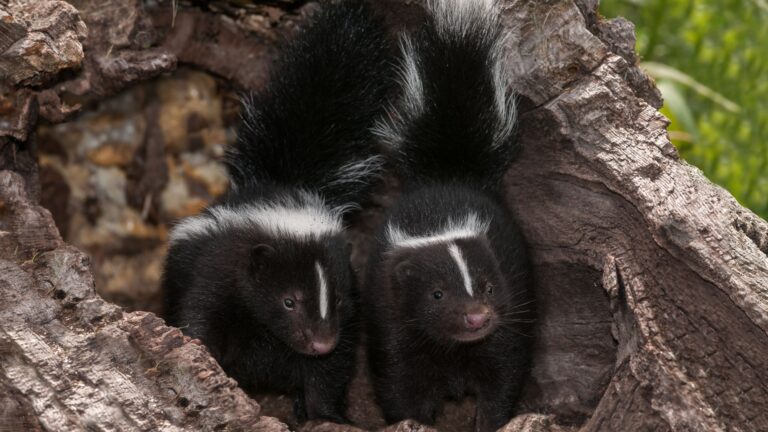15 Surefire Ways To Attract More Cardinals To Your Bird Feeder
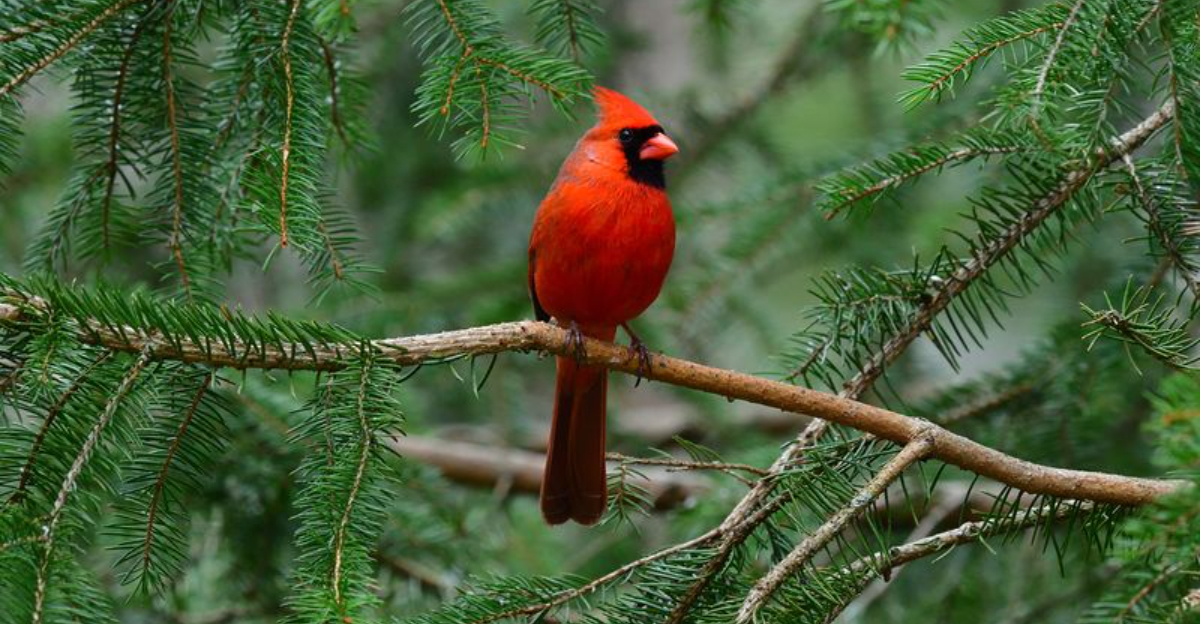
Ever spotted that flash of crimson against a snowy backdrop? Northern Cardinals bring joy year-round with their stunning plumage and cheerful songs.
These beloved backyard visitors can become regular guests with the right setup. Let’s explore how to transform your yard into a cardinal haven they simply can’t resist!
1. Offer Sunflower Seeds Galore
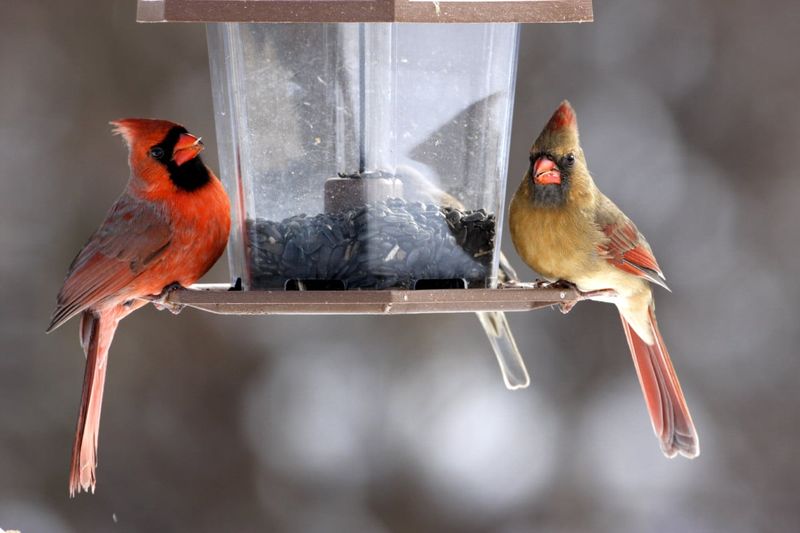
Cardinals go absolutely crazy for black oil sunflower seeds. Their strong beaks crack these shells with ease, giving them access to the nutritious kernels inside.
Fill your feeders with these seeds as the main attraction. The high fat content helps cardinals maintain energy, especially during cold winter months when they need extra calories to stay warm.
2. Install Platform Feeders

Cardinals aren’t fans of acrobatics at the dinner table. Their larger size means they prefer stable, flat surfaces for comfortable dining.
Platform or tray feeders give these beautiful birds the space they need to perch while eating. Look for feeders with drainage holes and roofs to keep seeds dry during rainy weather, ensuring your cardinal guests always have fresh food.
3. Create Brush Piles Nearby
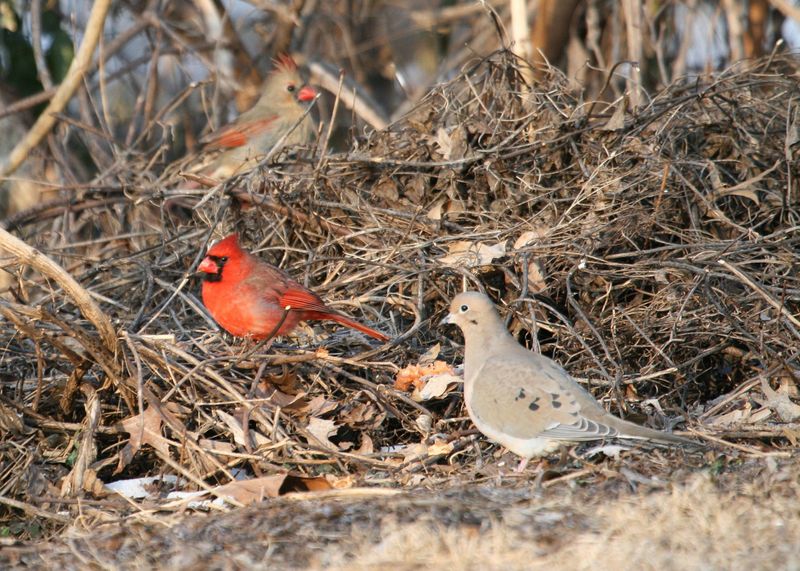
Wild at heart, cardinals appreciate having escape routes nearby. A strategic brush pile gives them quick cover if predators appear.
Arrange fallen branches, twigs, and leaves in a loose pile within sight of your feeders. Cardinals will use these natural shelters as staging areas before approaching feeders, making them feel secure enough to visit regularly.
4. Plant Dense Evergreens
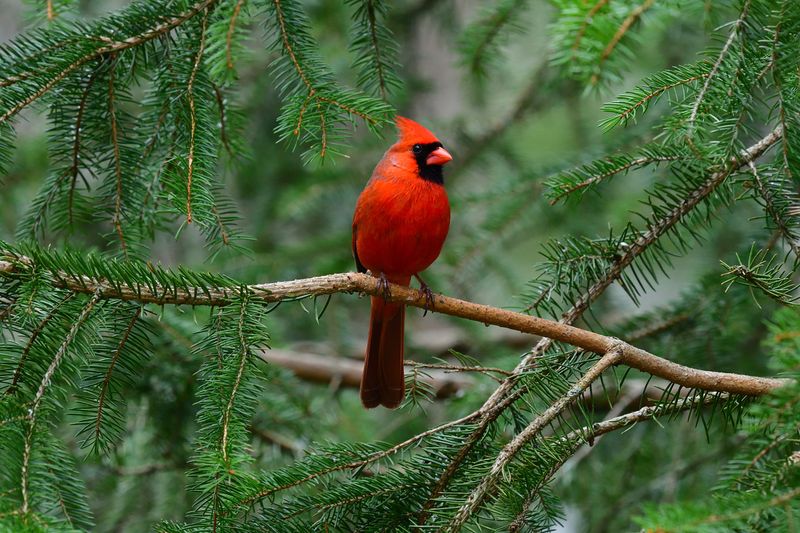
Feeling exposed makes cardinals nervous. These cautious birds seek protection from both weather and predators year-round.
Spruce, pine, and juniper trees create ideal roosting spots and nesting sites. Their dense branches offer perfect hideaways during all seasons. Plant these evergreens within 30-40 feet of your feeding station to create a cardinal-friendly landscape they’ll want to claim as territory.
5. Keep Feeders Full Through Winter

Winter brings food scarcity that hits cardinals hard. Unlike some birds, these stunning red beauties don’t migrate south when temperatures drop.
Consistent feeding during snowy months helps cardinals survive when natural food sources disappear. They’ll remember reliable food sources and return regularly. Check feeders daily during harsh weather to ensure they never find an empty restaurant.
6. Add Safflower Seeds To The Menu
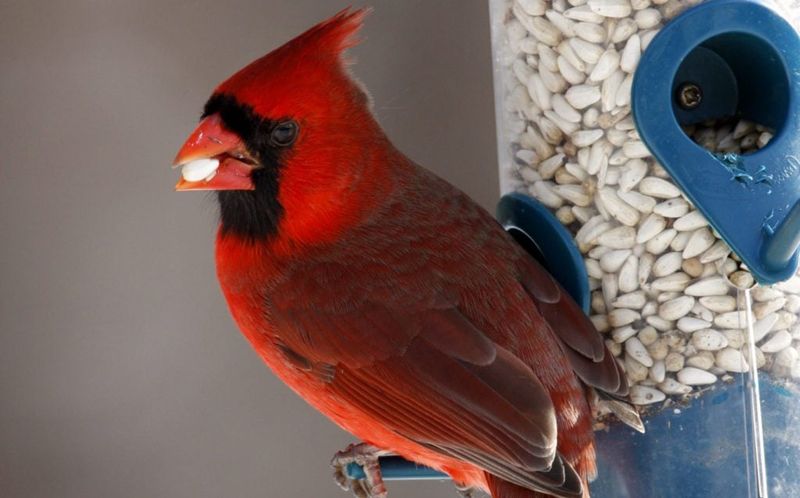
Squirrels raiding your cardinal feeders? Safflower seeds offer the perfect solution. These white, slightly bitter seeds attract cardinals while deterring many unwanted visitors.
Squirrels, grackles, and starlings typically avoid safflower, creating a cardinal-exclusive dining experience. Mix safflower with sunflower seeds or offer them separately – either way, your red-feathered friends will happily feast while other critters look elsewhere.
7. Provide Fresh Water Year-Round
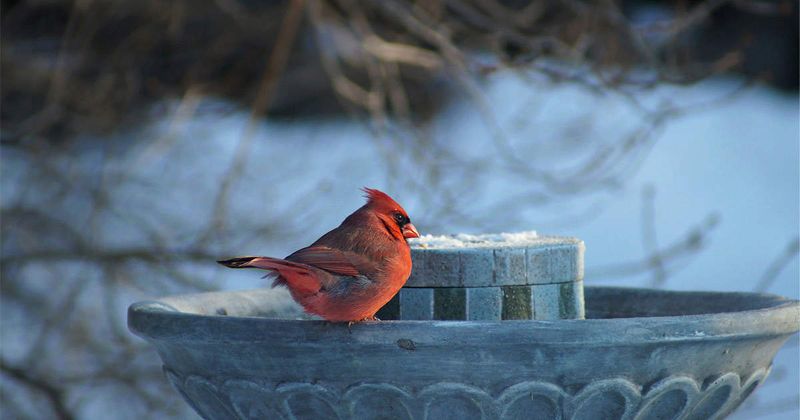
Cardinals need water for drinking and bathing, even in freezing temperatures. A heated bird bath becomes an irresistible attraction when natural water sources freeze.
Place your bath near protective cover but away from potential predator hiding spots. Keep the water fresh and clean, changing it every few days. Cardinals will visit for hydration and stay for your thoughtfully provided seeds.
8. Sprinkle Ground Feed Under Trees
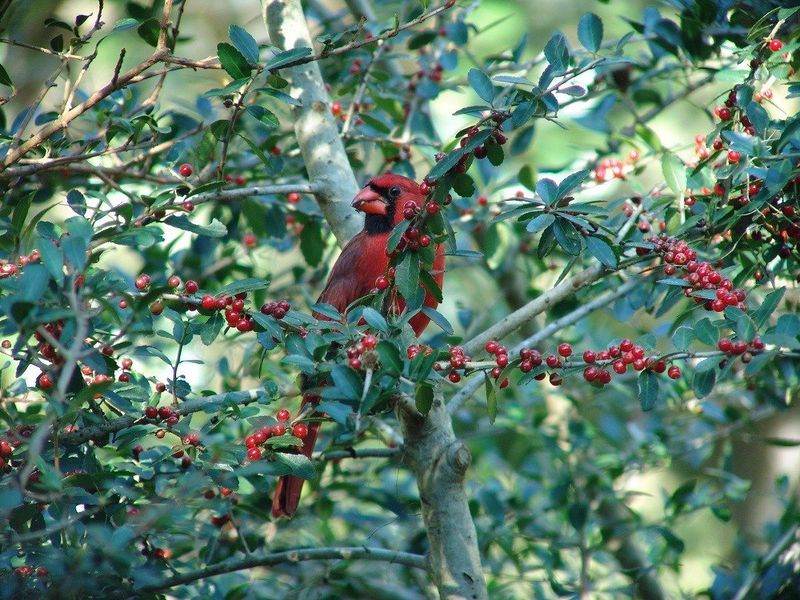
Cardinals often forage naturally on the ground beneath trees and shrubs. Mimicking this pattern makes them feel right at home in your yard.
Scatter some seeds on the ground under evergreens or near brush piles. This ground feeding approach appeals to their natural behaviors. Just offer small amounts that will be consumed quickly to avoid attracting unwanted critters.
9. Hang Feeders At Different Heights

Cardinals show interesting feeding preferences based on gender. Males often feed higher up, while females may prefer lower perches.
Accommodate both by placing feeders at various heights around your yard. This strategy not only attracts more cardinals but reduces competition at any single feeder. The hierarchy-conscious birds will appreciate having options that match their comfort levels.
10. Add Fruit To Your Offerings
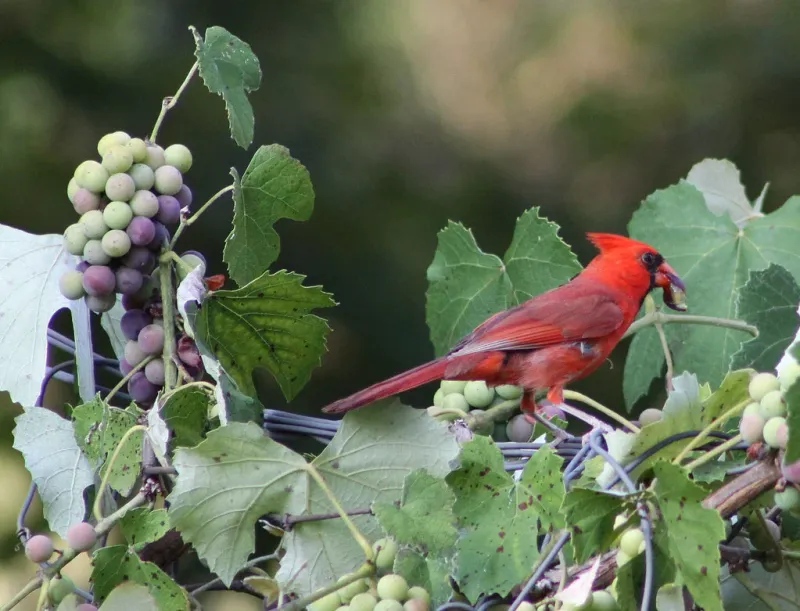
Fresh fruit adds variety to your cardinal buffet. These birds particularly enjoy apple slices, grapes cut in half, and berries when available.
Secure fruit pieces to platform feeders or specialized fruit feeders. This sweet treat attracts cardinals especially during breeding season when they need extra energy. The bright colors of fresh fruit also catch their attention from a distance.
11. Plant Native Berry Bushes
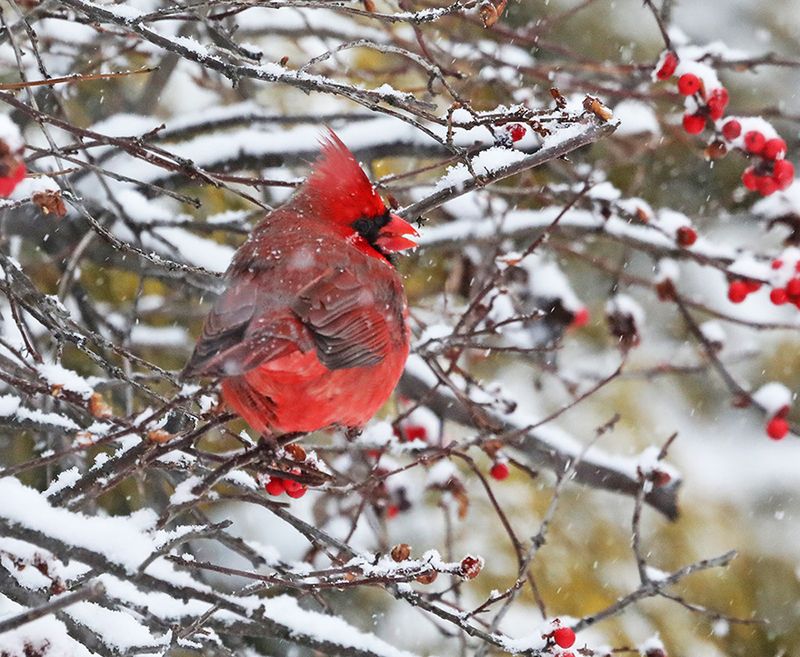
Wild berries form a natural part of cardinal diets. Serviceberry, dogwood, and elderberry bushes produce fruits cardinals find irresistible.
These native plants provide both food and shelter, creating a sustainable habitat. Cardinals will visit your yard year-round when these resources are available. As an added bonus, the same bushes attract insects that cardinals feed to their young.
12. Minimize Yard Disturbances
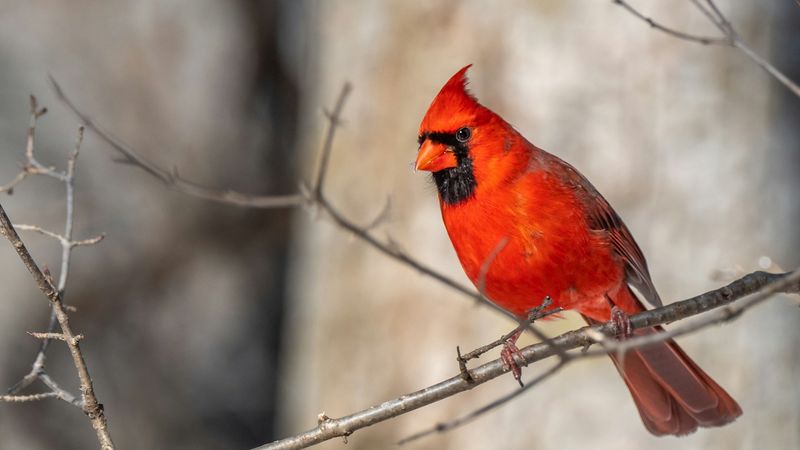
Easily startled, cardinals avoid areas with frequent commotion. Keeping feeding zones peaceful dramatically increases your chances of regular cardinal visits.
Position feeders away from high-traffic areas like patios or play equipment. Early morning and late afternoon represent prime cardinal feeding times, so schedule noisy yard activities for midday when possible. They’ll appreciate your consideration of their shy nature.
13. Create Cardinal-Friendly Spacing

Cardinals prefer not to fly long distances across open areas. They feel vulnerable to predators when crossing large exposed spaces.
Arrange your yard with stepping-stone perches – small trees or tall shrubs placed strategically between protective cover and your feeders. This creates safe travel corridors cardinals will use to reach your feeding stations, increasing the likelihood of regular visits.
14. Offer Calcium-Rich Supplements

Female cardinals need extra calcium during breeding season to produce strong eggshells. Crushed eggshells provide this crucial nutrient.
Bake cleaned eggshells at 250°F for 10 minutes to sterilize them, then crush into small pieces. Sprinkle these on platform feeders or mix with seeds. This simple addition supports nesting cardinals and encourages them to raise families near your feeding stations.
15. Maintain Consistent Feeding Times

Cardinals appreciate routine and quickly learn reliable feeding schedules. Fill feeders at the same times each day to establish a pattern they can count on.
Morning and evening represent ideal refill times that align with their natural feeding patterns. Cardinals will adjust their daily routines to match your schedule, increasing your chances of regular sightings of these gorgeous birds.




